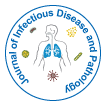当社グループは 3,000 以上の世界的なカンファレンスシリーズ 米国、ヨーロッパ、世界中で毎年イベントが開催されます。 1,000 のより科学的な学会からの支援を受けたアジア および 700 以上の オープン アクセスを発行ジャーナルには 50,000 人以上の著名人が掲載されており、科学者が編集委員として名高い
。オープンアクセスジャーナルはより多くの読者と引用を獲得
700 ジャーナル と 15,000,000 人の読者 各ジャーナルは 25,000 人以上の読者を獲得
インデックス付き
- Google スカラー
- レフシーク
- ハムダード大学
- エブスコ アリゾナ州
- ICMJE
役立つリンク
オープンアクセスジャーナル
このページをシェアする
抽象的な
Lassa Fever Unraveling the Mysteries of a Neglected Disease
Olivia Elizabeth
Lassa fever is an acute viral haemorrhagic illness that is endemic in West Africa, particularly in countries like Nigeria, Sierra Leone, Liberia, Guinea, and others. The disease is caused by the Lassa virus, which is a member of the Arenaviridae family. Lassa fever was first identified in 1969 when it was named after the town of Lassa in Nigeria, where it was first discovered. Transmission, Lassa virus is primarily transmitted to humans from contact with the urine or feces of infected Mastomys rats. Human-to-human transmission can occur through direct contact with the blood, urine, feces, or other bodily fluids of an infected person, as well as through contact with objects or surfaces contaminated with these fluids. Symptoms: Lassa fever can cause a wide range of symptoms, from mild to severe.

 English
English  Spanish
Spanish  Chinese
Chinese  Russian
Russian  German
German  French
French  Portuguese
Portuguese  Hindi
Hindi